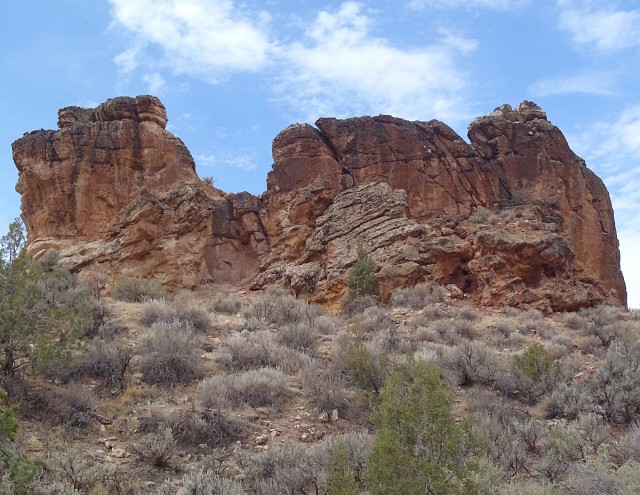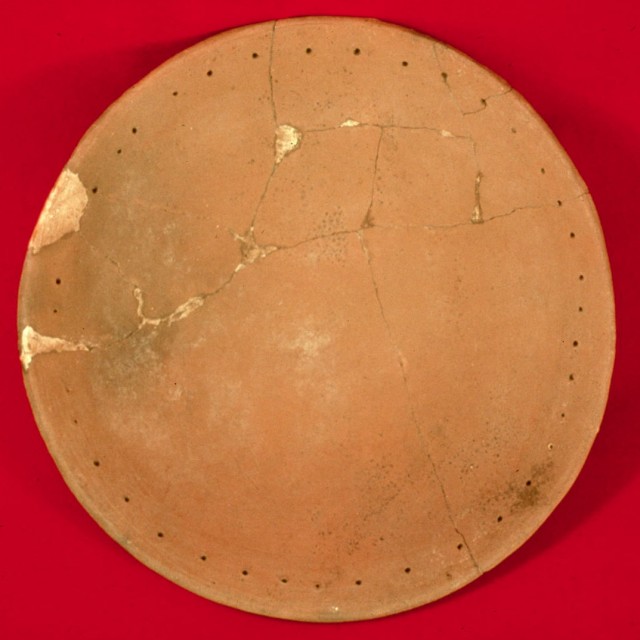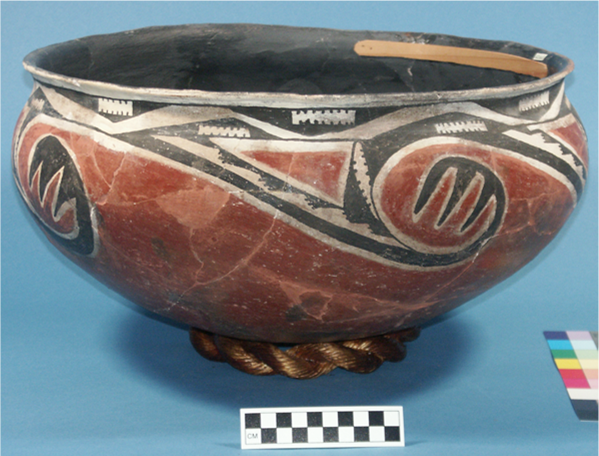- Home
- >
- Preservation Archaeology Blog
- >
- A Refugee Story, A.D. 1275

(November 19, 2015)—I’m going to tell a story—as close to a true story as I can, but a story nonetheless.
Seven hundred and forty years ago, groups of people fled their homes, seeking escape from political turmoil and economic hardships. A drought had stirred unrest in the already-troubled region. Old tensions had been simmering for a long time, beneath a lid that local leaders held tight through increasingly rigid measures of social control.
When the weather worsened and people felt even more threatened, those tensions boiled over into chaos. Some groups of people were far better off than others, and inequality of access—to land, food, opportunities, and religious authority—had led to tensions between communities.
In some places, these tensions erupted into acts of terrorism, and factions attacked and burned whole villages. Assailants killed men, women, and children, their bodies disposed in ways that signaled enmity, as well as utmost disrespect for those people, their religious buildings, and the symbols of their past.
Hungry, socially isolated, or otherwise disenfranchised people embraced invitations to join in the chaos, to blame someone for their misery and seek its vengeance. Perhaps some believed that violence would cleanse the place, bringing a new order that would make everyone follow their rules—the only truly correct rules, devotion to which would surely bring back peace and prosperity in the end. Participants on all sides of the conflict gave in to that most dangerous of human emotions: righteous anger.
This land had a long and glorious history. The beautiful buildings left behind showed how previous generations had worked together, succeeding in keeping social tensions in check to create public and religious spaces.
But now, things had fallen apart across a broad swath of what we today call the northern Southwest.

Families packed what they could carry and fled their homes. They had many destinations; the ones we can still trace lie mostly to the south and southeast. Perhaps some communities opened their arms to these newcomers from a troubled land, even knowing their arrival would bring changes. Perhaps others turned away suspiciously, or shut them out altogether, fearing they would bring the violence and unrest with them; not understanding that violence was what they were running from, and the last thing they wanted to carry on their backs.
In some places, these new arrivals became almost invisible to archaeologists. The distinctive pottery and other items that had marked their identities so strongly in their old homes were shed as they became outwardly just like everyone else in their host communities. Perhaps some of the migrants’ traditions persisted in the privacy of their homes, where we can no longer see their physical traces; perhaps others were relinquished in a symbolic break with the past. The migrants assimilated into their new communities, and remained there.

In other places, the refugees were allowed to settle in enclaves at the edges of existing communities. Their languages, food, clothing, pottery, and other household items marked them as different, underscoring the spatial separation. At first, things were tense. But the villages were not so large that the people didn’t see each other every day. New and established residents shared space, shared resources, and worked and played together. As time passed, lines blurred. New beliefs spread, along with a new style of pottery decoration that bore the symbols of those beliefs. Ideas from the migrants’ old homeland mixed with long-established local traditions and powerful images from the wealthy lands to the south in a compelling new way of thinking.
Some people were uncomfortable with this; they missed the old days, when everyone who was anyone followed a certain set of rules and knew their place in the order of things. Others embraced the changes; they remembered how a tightly established set of rules that had once kept the old social order in place had broken down, a generation ago, in the old troubled lands to the north. The new ideology included people from all its component traditions, and the migrants and the host communities were no longer distinct. Within a generation here, perhaps two, there were no longer instantly identifiable Hohokam or Mogollon hosts and distinct Kayenta enclaves—there were Salado communities.
Nothing lasts forever, and eventually these communities also changed, the people adopting new ways and material culture that made them difficult for archaeologists to recognize or to trace on the landscape.
But, for more than a century, communities of people with different ethnic backgrounds were able to live together not only without obvious endemic violence, but also without obvious differences in wealth or status, at least in their houses, household goods, or health. They shared walls, they shared water sources, and in bad weather they shared crowded indoor spaces—the challenges of which are all too familiar to us in this season of too-long holiday visits and group dinners.

It can’t have been easy, but their communities lasted. It was not always peaceful, but the problems of the past were never again allowed to erupt in the archaeologically visible violence of earlier generations.
This is, of course, a story; quite a bit of it is archaeologically verifiable, but some of it is guesswork. It isn’t hard to surmise those parts, though, because the story is such a familiar one. We’ve seen it happen again and again, in times and places all over the world with a long history of buried conflicts, and where people who feel powerless seek solace in hatred with a righteous streak, and then in violence.
I’m sure things didn’t happen in precisely this way in the Southwest, and I’m sure there were problems in Salado communities, too. But if given a choice between living in the Four Corners region in A.D. 1275 and Cliff, New Mexico, in 1325, I know which place I’d pick.
Archaeologists often cite the long-term perspective of our discipline as its greatest advantage in helping us to understand the challenges of the present and the ways humans have approached similar problems in the past as history repeats itself, sometimes in all the wrong ways. This doesn’t mean emulating the past, or finding easy answers there. But when things fall apart, it can give us hope by showing us times in the past when people recovered from disasters, or forged new traditions for maintaining peace and keeping community members from becoming unbearably powerless or disenfranchised.
Perhaps that long-term perspective can help us to critically examine the loud, competing promises of temporary safety that some people are quick to offer in troubled times, and help us consider how to choose actions, words, and ways of thinking that seem most likely to lead to the kind of society we want to live in decades from now.
At least, that’s the story I want to believe in.
3 thoughts on “A Refugee Story, A.D. 1275”
Comments are closed.
Karen,
I enjoyed the “story” and think it is exactly what we need to reach more of the public instead of the dry, esoteric tomes usually produced by archeologists. I believe your words brought to life a likely scenario of what happened in the late 1200s and give people real food for thought for the world we live in today. Thank you.
This is great, thank you Karen. I am just about to assign it to my undergraduate class in SW archaeology. And I’m about to forward the link to a bunch of colleagues.
This is a very interesting perspective, story. Thank you. We have been talking about refugees for days now, and your story rings true.